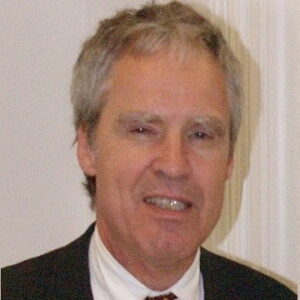Horst Ludwig Störmer is an American physicist of German ancestry. He was a co-winner of the 1998 Nobel Prize in Physics for his role in the discovery of a new type of quantum fluid with fractionally charged excitations. He spent several years at Bell Labs collaborating with another eminent scientist, Daniel Tsui, on experiments involving the quantum Hall effect. He was born into a middle-class, close-knit family in Germany and spent his childhood building castles and other structures, demonstrating an early aptitude for both physics and architecture. After completing his education, he initially intended to study architecture but switched to mathematics and physics in the middle. He earned a Ph.D. in physics from the University of Stuttgart after completing his doctoral work under the supervision of Prof. Hans-Joachim Queisser. He relocated to the United States shortly thereafter to take a position at Bell Laboratories, the research arm of American Telephone and Telegraph (AT&T). This is where he met Daniel Tsui, a specialist in two-dimensional electron systems in silicon. The two men collaborated on significant research into the quantum Hall effect, which ultimately resulted in the discovery of the fractional quantum Hall effect.
Childhood & Adolescence
Horst Ludwig Störmer was born in Frankfurt, Germany, on April 6, 1949. In the region, his forefathers were farmers, innkeepers, blacksmiths, carpenters, and merchants. He had one brother, and his parents were adamant that their children receive an excellent education, an opportunity they had been denied.
He grew up in an extended family and spent his childhood with his brother and cousins building sand castles and cardboard tents. At the age of ten, he enrolled in a gymnasium to begin his studies. While he excelled in science and mathematics, he struggled with languages. He was also a standout athlete, particularly in track and field.
As a teenager, he conducted numerous scientific experiments and even lost a portion of his thumb in an explosion-related accident. He graduated from high school with average grades and enrolled at Darmstadt’s Technical High School to study architecture.
Within a few months, he realized architecture was not for him and enrolled at Frankfurt am Main’s J.W. Goethe-Universität to study mathematics and physics. He completed his diploma thesis under the supervision of Prof. Eckhardt Hoenig at Professor Werner Martienssen’s Physical Institute. He also had the opportunity to work alongside another future Nobel laureate, Gerd Binnig, at this location.
He completed his doctorate in France, where he worked in a joint laboratory run by the French CNRS and the German Max Planck Institute for Solid State Research. He wrote a thesis under the supervision of Prof. Hans-Joachim Queisser on the investigation of electron hole droplets in high magnetic fields and was awarded a PhD by the University of Stuttgart in 1977.
Career of Horst Ludwig Störmer
Horst Ludwig Störmer was advised by Prof. Queisser to relocate to the United States and work for Bell Labs, American Telephone and Telegraph’s research arm, while pursuing his doctorate (AT&T). Störmer joined Bell Labs in June 1977, encouraged by his mentor.
His initial research at the labs focused on modulation-doping, and in the fall of 1978, he was offered a permanent position at Bell Labs. Soon after being joined by his long-time assistant, Kirk Baldwin, he conducted numerous physics experiments that laid the groundwork for numerous optical experiments on two-dimensional electron systems.
Daniel Tsui, one of the world’s foremost experts on two-dimensional electron systems in silicon, was already associated with Bell Labs at the time. Störmer already knew Tsui, and the two men developed a long-standing professional relationship and personal friendship.
The men began researching the quantum Hall effect, which Klaus von Klitzing discovered in 1980. Another area of study was the electron crystal, which was theoretically predicted to form in samples with a very low electron density when subjected to a very strong magnetic field.
The pair observed the Hall effect in semiconductors at near-absolute zero temperatures and in extremely strong magnetic fields. In 1982, they made an interesting observation and discovered the fractional quantum Hall effect by chance. The following year, Robert B. Laughlin, an American physicist, proposed an explanation for this phenomenon by proposing that electrons in strong magnetic fields form a quantum fluid composed of quasi-particles with fractional electric charges.
Störmer was appointed director of the Physical Research Laboratory in 1991 after being promoted to head the department of Electronic and Optical Properties of Solids in 1983. His career at Bell Labs was exciting, but he had always wished to become a teacher. He resigned from his position at Bell Labs in 1997 to pursue his passion and joined Columbia University in 1998 as a Professor of Physics and Applied Physics, while continuing to work part-time as an Adjunct Physics Director at Bell Labs.
Significant Works of Horst Ludwig Störmer
Horst Ludwig Störmer is best known for inventing modulation doping, a technique for fabricating semiconductors with extremely high mobility two-dimensional electron systems. This laid the groundwork for Störmer and Daniel Tsui’s subsequent observation of the fractional quantum Hall effect.
Awards and Accomplishments
Horst L. Störmer, Robert B. Laughlin, and Daniel C. Tsui shared the 1998 Benjamin Franklin Prize in Physics for discovering the fractional quantum hall effect. Later that year, the trio was jointly awarded the Nobel Prize in Physics for “discovering a novel type of quantum fluid with fractionally charged excitations.”
Personal History and Legacies
He met Dominique Parchet while completing his PhD and married her later that year.
Estimated Net Worth
Horst Ludwig Stormer is a wealthy physicist who is ranked among the most popular physicists. Horst Ludwig Stormer’s net worth is estimated to be around $1.5 million, based on our analysis of Wikipedia, Forbes, and Business Insider.


